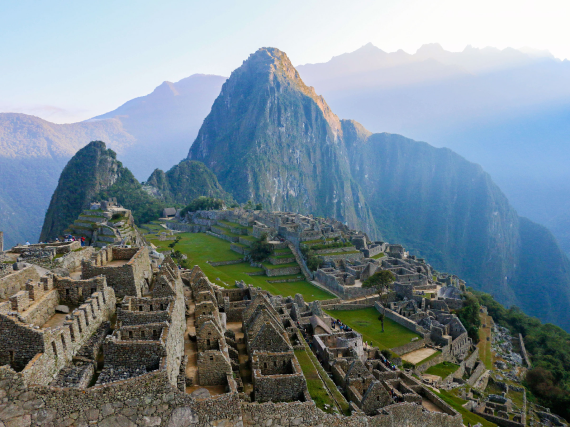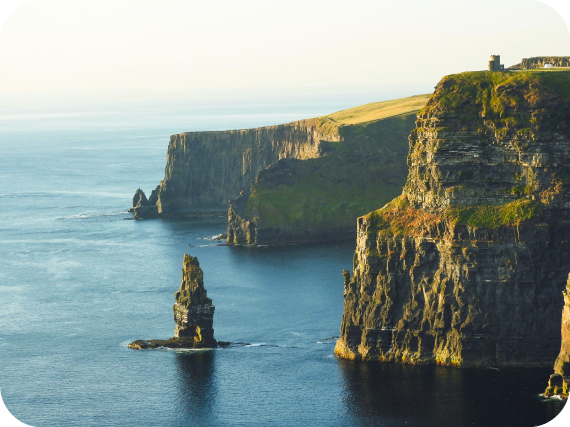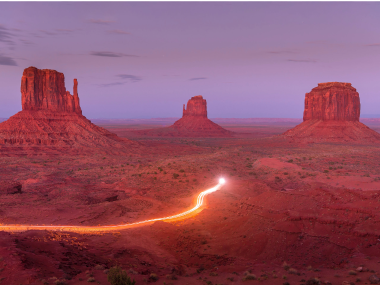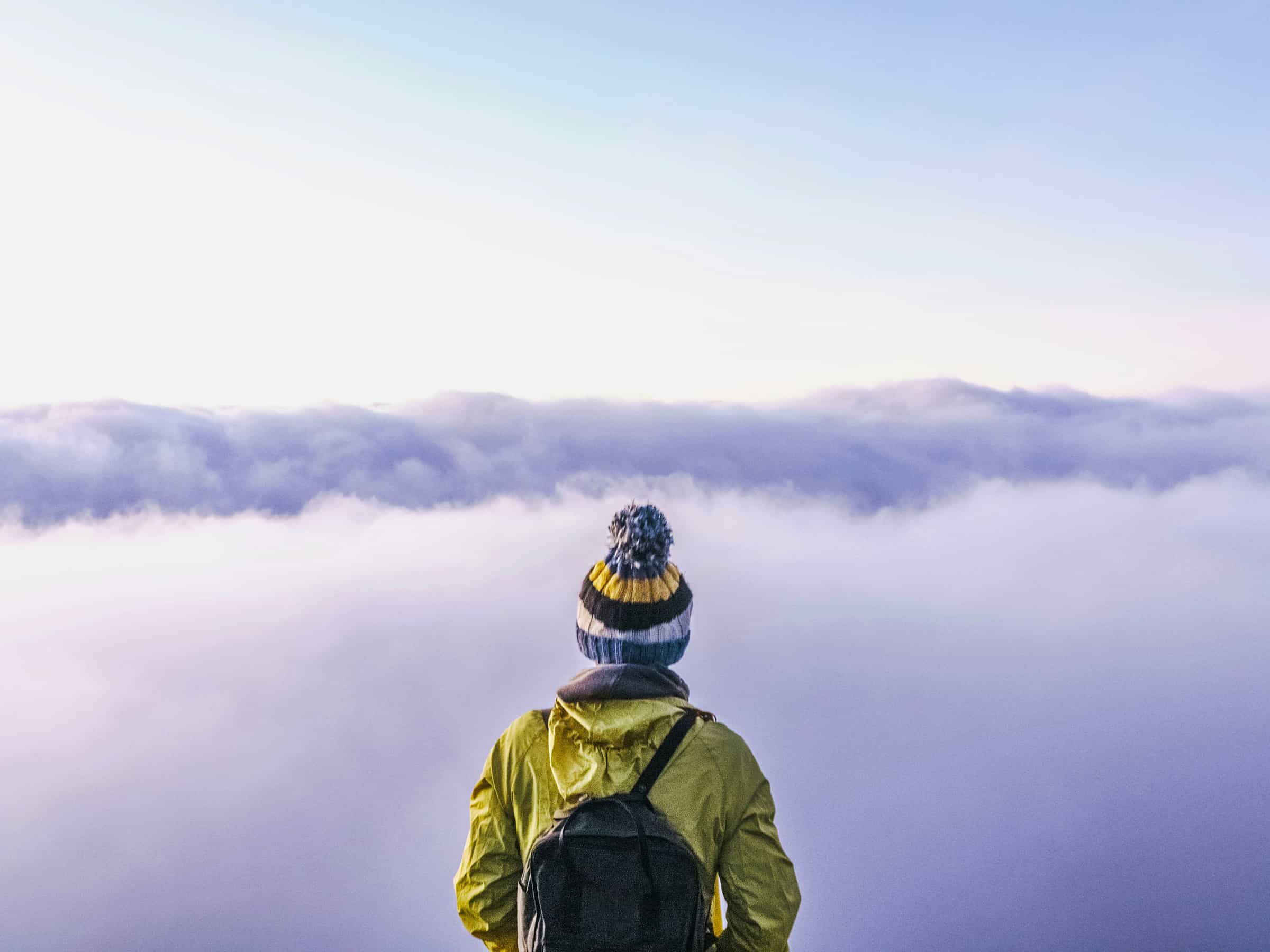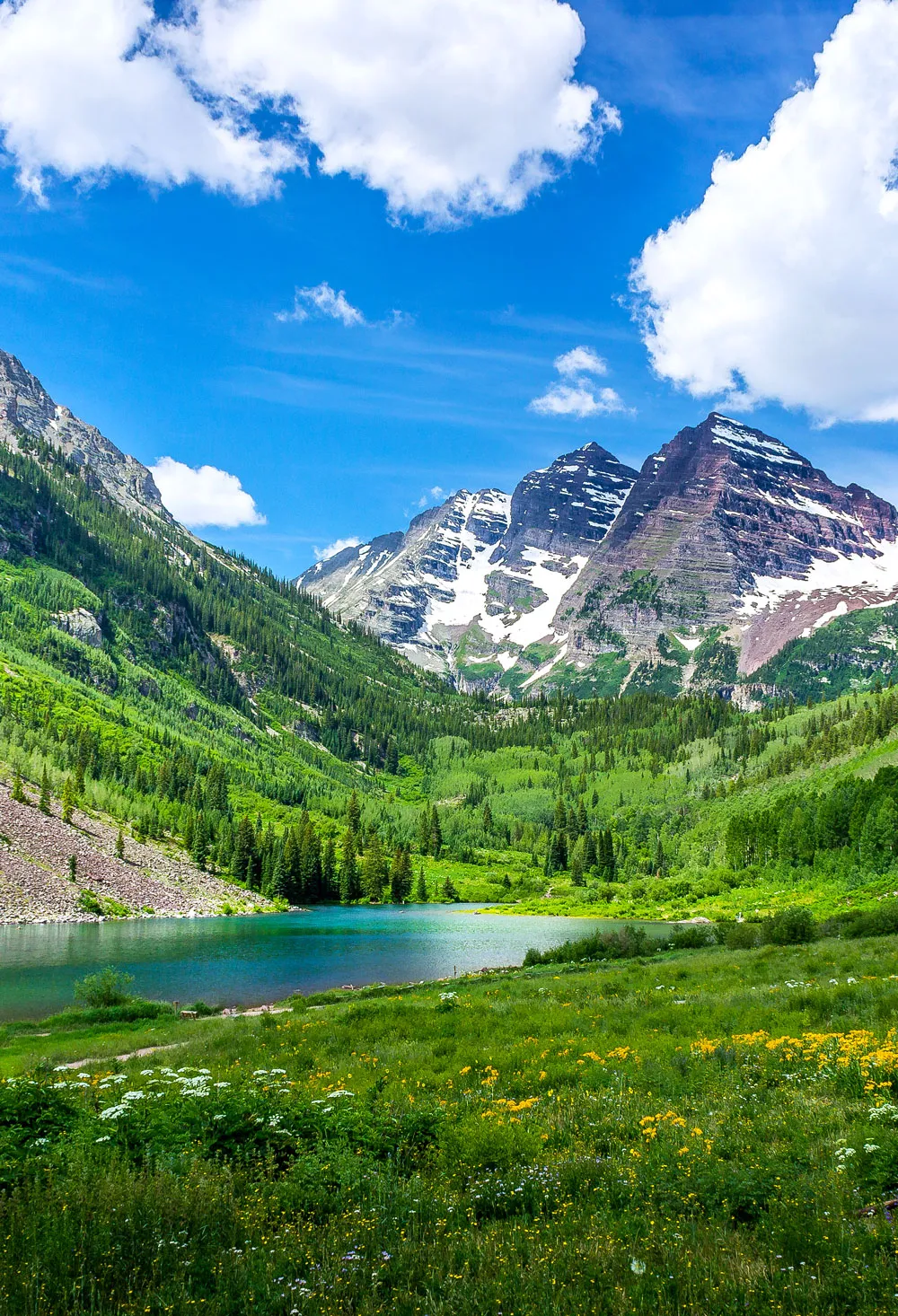More than 300 million people visited U.S. national parks last year, many of them in search of a great hike. Some hikes are so loved that you’ll need to make reservations well in advance or win a permit lottery; for others, you’ll just need to plan ahead for parking and not be bothered if things get a little crowded. But great hiking isn’t confined to the national parks — there are worthwhile treks in every state, from state parks to beloved lakes and awe-inspiring rock formations. Here are eight of America’s most popular spots for a day hike.
Delicate Arch Trail – Utah
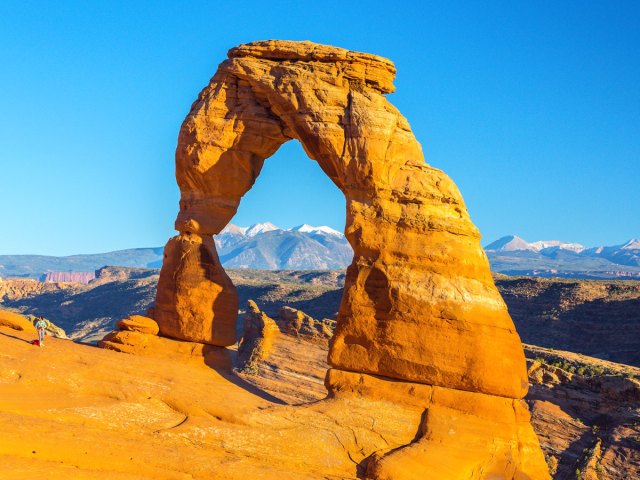
Utah’s most recognizable natural landmark is a stunning freestanding sandstone arch rising 65 feet into the air in the aptly named Arches National Park. Eroded by wind and water, Delicate Arch is the largest of the park’s more than 2,000 natural arches, which have been formed over approximately 65 million years.
Getting to the gravity-defying parabola requires a moderately strenuous 3-mile round-trip hike with an elevation gain of 480 feet, which will probably take most people two to three hours. Dogs are not allowed, and hikers will want to bring at least 2 quarts of water for each person, as well as sunscreen and sturdy shoes. Sunrise is a popular time for photographers, as the morning rays bathe the arch in fiery red.
Delicate Arch Trail is unshaded, and in summer, rangers recommend against hiking during the hot afternoon hours. Those who aren’t up to the hike can find an excellent view a mile away at the Lower Delicate Arch Viewpoint, which requires only a 100-yard walk over flat ground.
More than 1.5 million people visit Arches National Park every year, and during summer months, many trailhead parking lots fill by 7:30 a.m. Late afternoon and evening hours offer beautiful sunsets, reduced crowding, and gorgeous stargazing.
Diamond Head Summit Trail – Hawaii
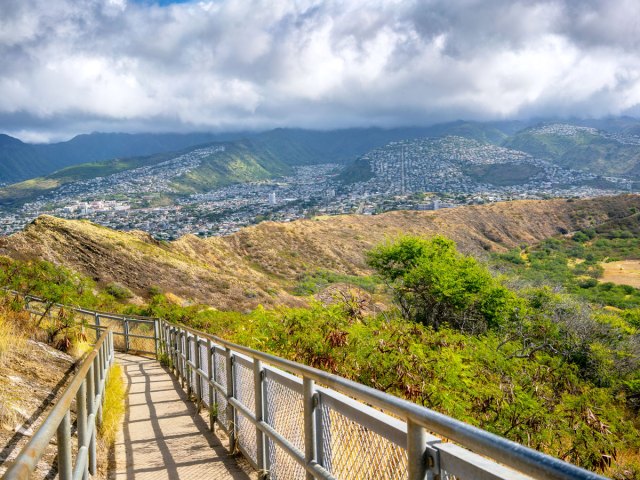
One of the most popular trails in the state, Diamond Head draws more than a million hikers a year to Hawaii’s most-recognized landmark. But the rewards are worth it: This moderately challenging, 1.6-mile round-trip trek has an elevation gain of only 560 feet and rewards with breathtaking 360-degree views and excellent photo opportunities of Oahu’s southern shore, including Waikiki Beach and downtown Honolulu.
Diamond Head’s distinctive bowl-shaped depression was created approximately 300,000 years ago, when a single eruption blasted ash and fine debris skyward, forming the volcanic crater. The well-maintained trail begins inside the crater and features a mix of paved walkways, steep switchbacks, and historic military installations.
The park opens at 6:00 a.m., and the last entrance to hike the trail is at 4:00 p.m. All visitors must be out of the park by 6:00 p.m. No animals other than service dogs are allowed, and it’s recommended that hikers wear sturdy shoes and carry sun protection and water. Nonresident hikers must reserve Diamond Head visits up to 30 days in advance. Entry fees are $5 per person and $10 per vehicle, payable by credit card only.
Flattop Mountain – Alaska
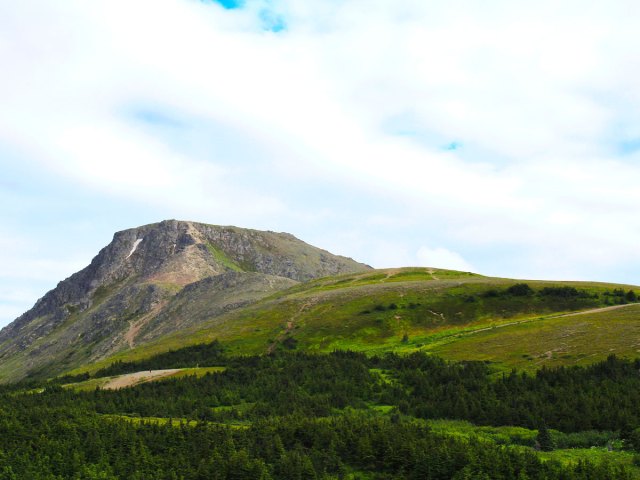
Alaska’s most-visited mountain, Flattop Mountain offers panoramic views spanning Denali — America’s tallest peak — to the Aleutian Islands. The summit of Flattop Mountain is located in Chugach State Park, just a 30-minute drive from downtown Anchorage.
Hiking to the football field-sized summit from the Glen Alps trailhead takes about an hour along a 3-mile round-trip trail with a strenuous 1,350-foot gain in elevation. However, the 1.5-mile Blueberry Loop, one of the most-hiked trails in the state, features just 324 feet in elevation gain and is doable in 45 minutes or so. It’s a popular stroll for blueberry picking, and it’s not uncommon to spot moose in the vicinity. (As with all wildlife, steer clear and give them plenty of space.)
Admission is free, but parking at the Glen Alps lot is $5. For Anchorage visitors who don’t have a rental car, Flattop Mountain Shuttle will deliver you from downtown for $25 per person round-trip.
Half Dome – California
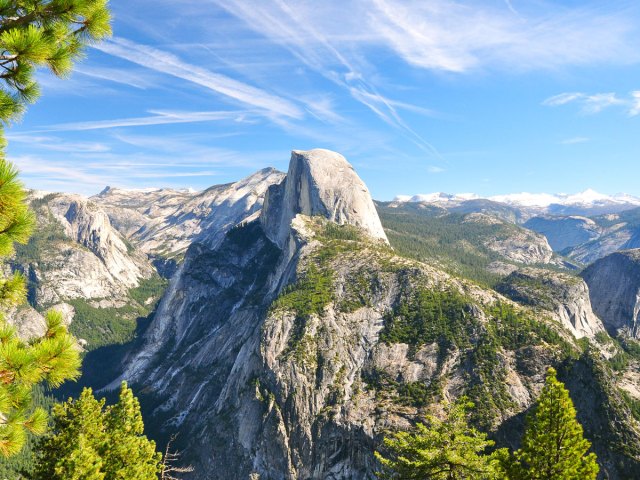
More than 50,000 people visit Half Dome — Yosemite National Park’s most iconic hike — every year, but only 225 lucky climbers per day are allowed to haul themselves beyond the base of the sub-dome to the summit 4,737 feet above the valley floor.
Open seasonally (typically late May through October), the summit is accessed via two cables up the final 400-foot section of the grueling 16-mile trail. Despite the cables, Half Dome (which had its first recorded summit in 1875 by George Anderson) remains a dangerous climb.
Those who make it to the top of the distinctive granite monolith are treated to sweeping views of the park and the Sierra Nevada mountains, along with the joy of accomplishing a true bucket-list hike. Whether you attempt Half Dome or not, visitors wishing to enter Yosemite during peak hours in peak season will need to make a reservation.
Maroon Bells – Colorado
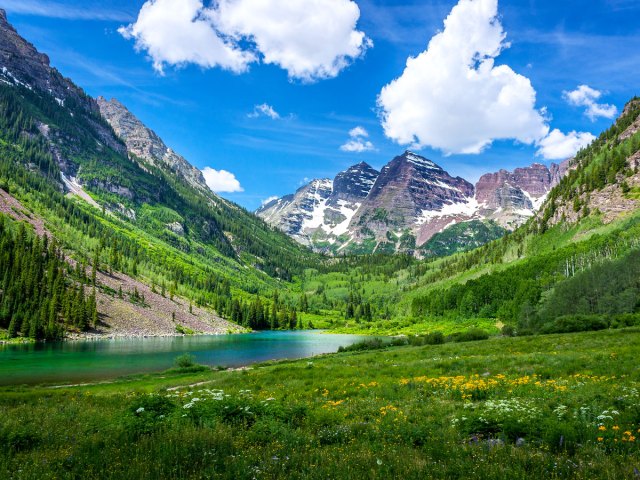
Perhaps the most photographed spot in Colorado, Maroon Bells are two majestic 14,000-foot peaks whose aspen-studded slopes are perfectly mirrored in the lake below. Early morning and late afternoon provide the best lighting for photography, and the period between late September to early October offers peak aspen viewing.
Access requires careful planning during peak season. With the trailhead at 9,580 feet, visitors should be prepared for the effects of altitude as well as rapid weather changes. Located 10 miles southwest of Aspen via Maroon Creek Road, the area operates under a strict reservation system from late May through mid-October. Private vehicles are restricted between 8:00 a.m. and 5:00 p.m., requiring advance reservations through Recreation.gov for either vehicle access or regular shuttle service from Aspen Highlands. Weather permitting, visitors can drive directly to Maroon Lake without reservations during the off-season.
Maroon Lake Scenic Trail is an easy, 1.5-mile loop on well-maintained paths. Perfect for families and photographers, this mostly flat trail provides gorgeous perspectives of the peaks’ reflection. A peaceful alternative to the busier lake shores is Crater Lake Trail, a moderate, 3.8-mile round-trip trek climbing 500 feet and rewarding hikers with spectacular views back toward the Bells.
Bright Angel Trail – Arizona
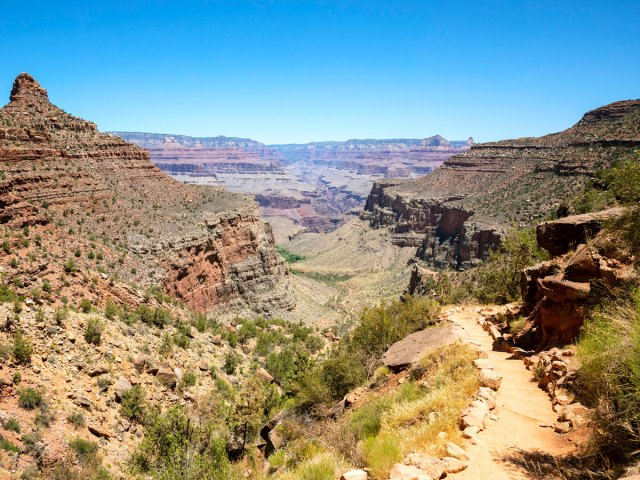
One of the most iconic hikes in the U.S., Bright Angel Trail takes hardy hikers through approximately 2 billion years of geology that created the glorious multicolored rock formations that make up the Grand Canyon. Bright Angel’s switchbacks are (relatively) wide and well maintained, though hikers will need to yield to the mule trains making their way up and down the 8.8-mile out-and-back trail along the canyon’s South Rim.
Going down is the easy part: Bright Angel’s 2,000-plus feet of elevation gain will get you on the way back, when heat and exhaustion may have set in. However, there’s no need for hikers to do it all in one day; you can also obtain a camping permit and stay overnight at the bottom. Still, the views are spectacular even if you venture down only a half-mile or so.
Grotto Falls – Tennessee
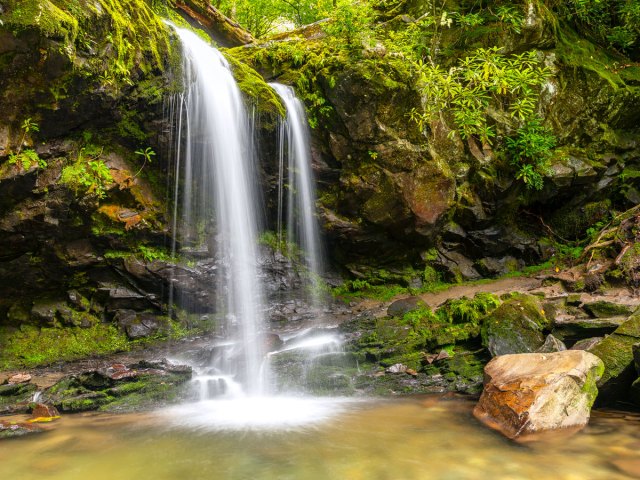
What could be more refreshing than walking behind a curtain of falling water? That’s the appeal of Grotto Falls, a beautiful 25-foot cascade nestled in a secluded mountain cove in Great Smoky Mountains National Park, the nation’s most-visited national park.
Access the falls via a moderate, 2.6-mile round-trip hike on the Trillium Gap Trail. This scenic path winds through pristine old-growth forest, small streams, and thickets of rhododendron, which burst into spectacular pink and white blooms in late spring and early summer. For those seeking a longer trek, the trail continues past the falls toward Mount LeConte. As a bonus, hikers can opt for an overnight stay at LeConte Lodge, the highest guest lodge in the eastern United States.
The Trillium Gap parking area can fill up quickly, especially in summer, so arrive early or consider using a shuttle. Rainfall can make trail conditions muddy and slippery, particularly around the falls where wet rocks require extra caution.
Empire Bluff Trail – Michigan
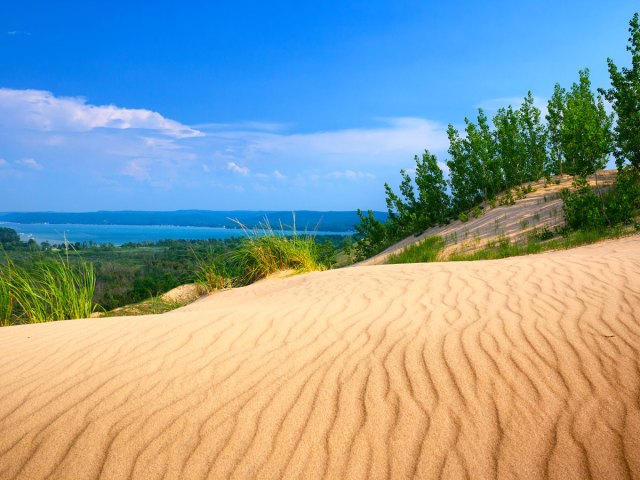
The phrase “sand dunes” may conjure images of the Sahara Desert, but there are no desert treks required at Sleeping Bear Dunes National Lakeshore. Here, visitors can find sand bluffs towering 450 feet above the clear waters of Lake Michigan.
The Empire Bluff Trail takes visitors on a 1.5-mile round-trip journey through wildflower-strewn forests to the scenic double-dune overlook, where boardwalks and an observation deck look out over the panoramic lakeshore. Pack a lunch, frolic in the lake, show up for spectacular sunsets, or stargaze under inky dark skies.
Editor’s note: This story has been updated to correct a previous error concerning the location of the Empire Bluff Trail.
More from our network
Daily Passport is part of Inbox Studio, which publishes content that uplifts, informs, and inspires.

